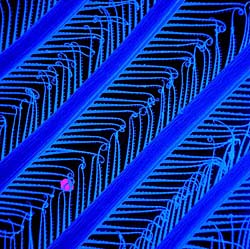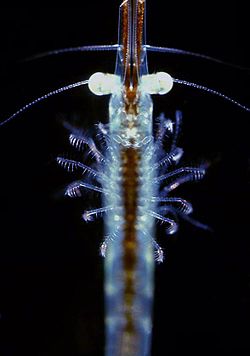This article needs additional citations for verification .(October 2025) |
In marine and freshwater ecology, a particle is a small object. [1] [ specify ] Particles can remain in suspension in the ocean or freshwater. However, they eventually settle (rate determined by Stokes' law) and accumulate as sediment. Some can enter the atmosphere through wave action where they can act as cloud condensation nuclei (CCN). Many organisms filter particles out of the water with unique filtration mechanisms (filter feeders). Particles are often associated with high loads of toxins which attach to the surface. As these toxins are passed up the food chain they accumulate in fatty tissue and become increasingly concentrated in predators (see bioaccumulation). Very little is known about the dynamics of particles, especially when they are re-suspended by dredging. They can remain floating in the water and drift over long distances. The decomposition of some particles by bacteria consumes much oxygen and can cause the water to become hypoxic.




